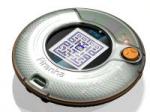|
|
|
|
image2primer 1.0
|
|
 |
|
The image2primer can convert Images (such as bmp, jpg, gif, png...) in a header
file. The header file includes a value for every pixel in the Image. |
| Code size: | depending on image |
Author: | mebe |
| Source files included: | yes |
Version: | 1.0 |
| Use circleOS: | yes (V1.5) |
Creation date: | 2008-12-28 15:34:14 |
| Hardware modification: | no |
Modification date: | 2009-01-02 12:52:00 |
| Based on the STM32 Primer: | All |
| |
| |
|
| Downloads: | 2377 |
Views: | 29147 |
| |
|
| Vote: |
|
Average ratings: | 3.09/5 (242 rates) |
Download:
image2primer-1.0.zip (103 KB)  Description:
Description:: Note :
This project requires Microsoft's .NET-Framework 2.0 or higher.
The image2primer can convert Images (such as bmp, jpg, gif, png...) in a header
file. The header file includes a value for every pixel in the Image.
: Note :
The idea for this small project was given from the user "Ilm" by the
"RGBPicToHeader"-project. This is only a version with some improvements.
: Note :
Image-Headerfiles become very large. For each pixel in the Image two bytes are
required. The maximum image-size for the primer is about 50x50 pixels.
: Improvements (relatet to the RGBPicToHeader) :
- Correct color-calculation
- Background-color-set
- Therefore You can also use images with transparencitys (such as png-files).
: How to create the headerfile :
1. Launch the image2primer.exe
2. Click on the "Load image"-Button and select the image-file
3. If you want, select your background-color (normally black)
4. Click on "Convert" and select the destination-file. (*.h)
: How to draw the image on the primer :
The integration is the same as with the RGBPicToHeader-project.
Add the following code to your application:
/* Public variables --------------------------------------------------------*/
// The example-image-declaration
static const u16 image[] = {
#include "example.png.h"
};
/* Your Programm ------------------------------
// Anywhere in the program.
DRAW_SetImage(image, 48, 48, 32, 32) ; // 32x32 Image Size
: Note :
You may use the image in more than one position on the screen.
e.g. you can use an image as a playing-stone in a game, which
is used many times.
_______________________________________________________________________________
[2008/12/28] - Benjamin Meier Copyright (c) 2008 Onlywork
|
|
|
|
|

















